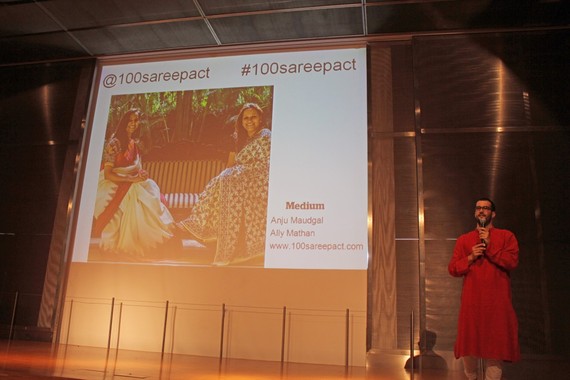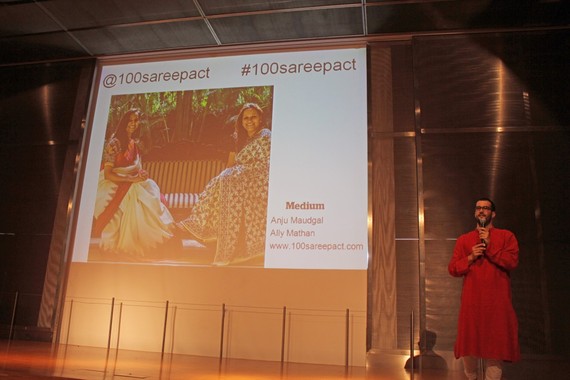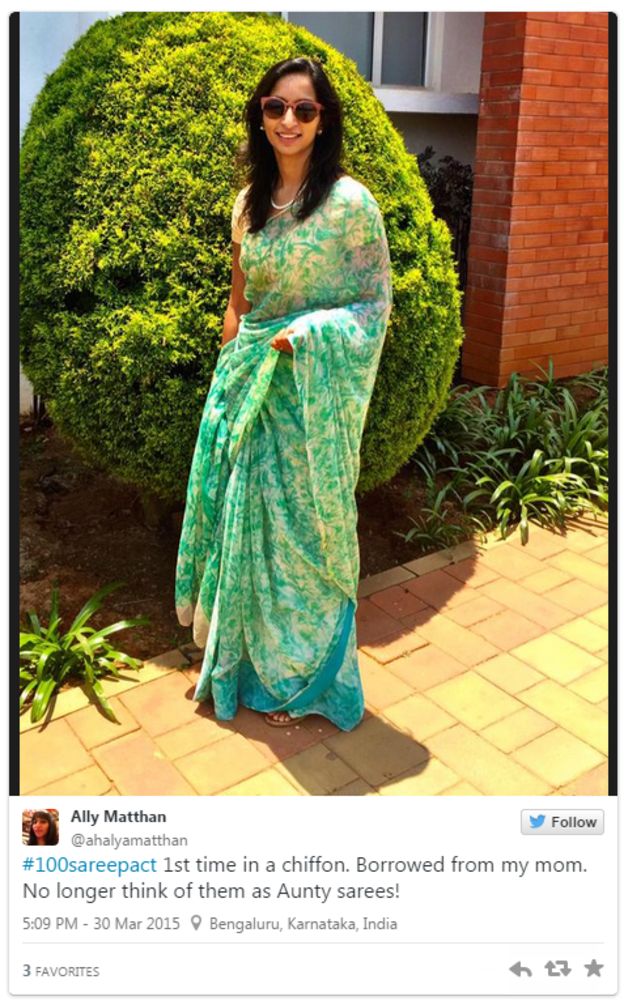
The 100 Saree Pact
Starting out as a pact between two friends, the 100 Saree Pact has now evolved into a full-fledged movement. When Anju Kaddam and Ally Matthan first decided to wear their sarees at least 100 times in a single year, they had no idea what women all over the country would end up responding to this ideal and following the pact themselves. As its popularity increased, this pact also got its very own hashtag, ‘#100SareePact’ which is now used prominently on social media platforms for women to express and participate in the sisterhood. Furthermore, it has also been responsible for sparking a newfound respect for Indian ethnic garments internationally, particularly the Saree, India’s textiles and the varied kinds of handcrafted work done on them.
The Background
While the Saree is considered one of the most quintessential Indian ethnic garments, it is not worn regularly by urban professionals who generally prefer fuss-free clothing that can be worn and accessorized within minutes. Often, this outfit is reserved for formal occasions where heavier or richer clothing is appropriate.
The Birth of the Movement
Anju Kaddam and Ally Matthan began this pact in order to start wearing their Sarees at least a 100 times a year, which roughly translates to wearing a Saree twice a week. A partnership that started off as a personal means to wear these exquisite garments more often soon stemmed into a larger movement that is now embraced by women all over who want to be able to do the same.
About the Creators
Having spent 12 years as a TV journalist, Anju Kaddam attributed her confidence to her Sarees. She is the founder of WebTv.in and is also the ambassador of Pinkathon, which is India’s only women’s marathon. She brings the insights that come with the love of storytelling to this movement.
Ally Matthan, on the other hand, has her own set of skincare and fragrance brands, Areev and Ally Matthan Fragrances.
 #100sareepact (Image Courtesy: huffingtonpost.com)
#100sareepact (Image Courtesy: huffingtonpost.com)
Storytelling
Being avid storytellers themselves, Kaddam and Matthan’s personal pact has not only created a movement that facilitates fashion but also one that facilitates expression and tales. A large part of this movement involves women being able to create short commentaries and stories on their Saree experiences.
Signing up for the Pact
Joining the 100 Saree Pact is fairly simple. In order to be an active participant, women are required to share a photograph of them wearing a Saree on their preferred social media platform along with the hashtag – #100SareePact. In order to make the post more personalized, they are welcome to add comments on the style of the Saree, the make, the memories that it may evoke in them, the occasion that it has been worn for, their first Saree experience and so on.
Once this has been done, the participants are then required to wear a Saree 100 times in the following year. In order to make it slightly easier for the participants, repeats of garments are allowed.
Style and Variety of posts
The posts received by this movement are as diverse as the kinds of Sarees available in India as well as the women who choose to wear them. Younger women in their late teens in India usually post under their ‘Graduation’ tag as they are required to wear a Saree on the day of their school and college graduations.
On the other hand, working professionals in their 20s and above choose to post under varied titles ranging from daily wear, reactions at work, love and friendship, their favorite Sarees, other ethnic wear garments from their past and so on.
 #100sareepact (Image Courtesy: pinterest.com)
#100sareepact (Image Courtesy: pinterest.com)
Submitting a story
Submitting a story for this pact is as exciting as wearing a lovely new Saree to work when one is not used to doing so.
This section of the website requires participants to fill in a small form that asks their name, e-mail address, the title that they’d like to assign to their posts, tags (if any) and a secret question. It also requires them to select a category from their drop down menu before typing their story into a text box below.
To add more value to their story, women can also upload a picture that shows them or their friends wearing the Saree that they are talking about. Once posted, these stories can be shared on social media websites as a published post.
Global influence
Apart from speaking to women in India, the 100 Saree Pact has also reached Madrid in Spain. The numerous stories shared in the movement have managed to weave their way into the hearts of women living in Spain as well.
The movement was lauded heavily during a conference on the history and evolution of the Saree. It was led by Professor Jorge Diego Sanchez.
The movement was also referenced by the Sohinimoksha World Dance and Communications Company on Women’s Day (March 8th) during a performance organized by them on issues of gender equality and empowerment.
Interesting facts and comparisons
•This has become a movement that represents women empowerment and choice
•It strongly supports the dissemination of handmade products as well as more information regarding the work and effort that goes into creating these products
References
•http://100Sareepact.com/?page_id=6357
•http://www.bbc.com/news/blogs-
•http://www.huffingtonpost.com/devishobha-ramanan/how-the-sari-tipped-the-scales-effortlessly_b_7075042.html?ir=India
•https://twitter.com/100Sareepact
•http://100Sareepact.com/?page_id=2609
•http://100Sareepact.com/
Categories: Ethnic Innovations
